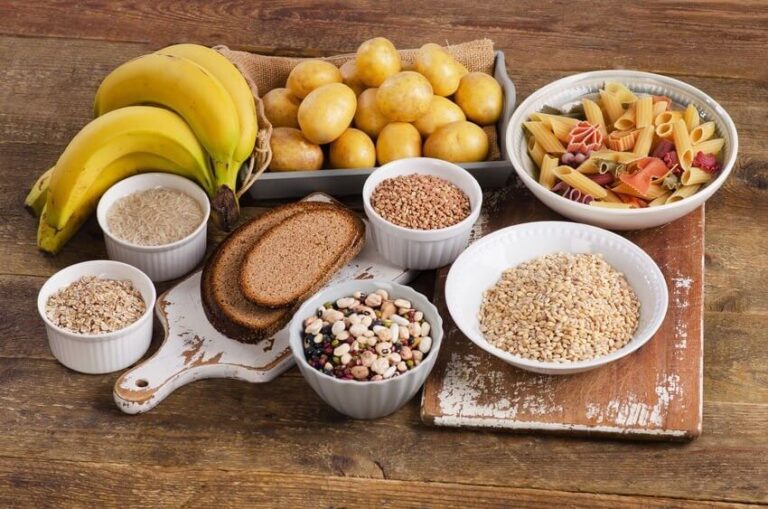Rice is a staple in many people’s diets. It’s inexpensive, satiating, and can be combined with several flavors to make tasty dishes.
However, rice may not be the best fit for everyone’s nutritional needs, mainly white rice. For example, people trying to eat fewer carbohydrates or calories may need substitutes like Konjac pasta.
Plus, swapping out white rice for healthier alternatives, like other whole grains, can add variety and essential nutrients to your diet.
This article raises ten healthier substitutes for white rice.
10 Examples of Rice Substitutes
Rice substitutes can be separated into low-carb or just other cereals or pseudocereals.
In the first case, these can be used as an accompaniment to a low-carbohydrate diet, and in the second, as a healthier alternative accompaniment.
The first four fall under the category of low carb substitutes, and the next six as more nutritious alternatives in the list below. Here are ten examples of rice substitutes:
- Pasta Konjac – Shirataki
The Shirataki Konjac or noodles are a type of white paste Asian. Its main ingredient is Konjac Flour: a kind of indigestible vegetable fiber low in calories.
They are inexpensive, gluten-free, but low in carbohydrates like rice or rice noodles. Its flavor is neutral, and it goes well with Japanese sauces, such as teriyaki sauce.
- Cauliflower rice
Cauliflower rice is a simple and tasty way to swap carbs for fiber. A single cup of cauliflower rice has just four grams of carbohydrates than 37 grams in regular rice.
You can use cauliflower rice the same way you would use regular rice: use it as a base for dishes and salads or serve it with a bit of butter and salt. If you can’t find it in your store, you can make it at home with fresh cauliflower and a food processor.
- Pumpkin spaghetti
Spaghetti squash is a substitute for rice, natural, easy to prepare, and low in carbohydrates (it provides only 7 per serving). Its consistency is softer than other alternatives and contains a higher content of vitamins and minerals, making it healthier.
You don’t have to put it through any particular machine to cook it. You cut the pumpkin in half, take it to the oven, and with the help of a fork, you can form the threads.
- Broccoli rice
Like cauliflower rice, broccoli rice is an ideal substitute for people on a low-carb diet, such as the ketogenic diet. Compared to white rice, it is lower in calories: 1 cup provides only 30 calories and is high in fiber, 5 grams per cup.
Broccoli is also considered a food rich in vitamin C; 1/2 cup provides more than 25% of your daily value. Vitamin C is a known antioxidant that can help prevent cell damage and strengthen the immune system. (1,2)
Like cauliflower rice, broccoli rice can be prepared by grating the broccoli or a food processor; then, it should be cooked over medium heat with oil. Some grocery stores also sell broccoli rice in the frozen section.
- Quinoa
Quinoa is a substitute for the healthiest rice. It can be considered better than white rice and is common in nutritional terms.
When comparing quinoa to rice, it’s not just about the nutrient content; but from where they are. In rice, the amino acids are concentrated in the husk. So when it is processed industrially, rice has a large part of its properties.
In the case of cinchona, the amino acids are found in the nucleus by which they are maintained. Other nutritional differences are a higher content of healthy fats and vegetable proteins; in quinoa, the values are five times higher. (3,4)
- Buckwheat – buckwheat
The buckwheat or buckwheat is a pseudocereal of Asian origin. Although its name may suggest it, it does not contain wheat or gluten, making it a substitute for rice suitable for those with gluten intolerance.
One of the main differences between buckwheat and rice is their amino acid composition. Buckwheat contains three of the eight amino acids most important for muscle recovery: lysine, threonine, and tryptophan.
Preparing buckwheat is as simple as rice can be boiled, and it takes about 12 minutes. It provides satiety, and its flavor is neutral so that it can be combined with a wide variety of spices.
- Bulgur wheat – bulgur
The bulgur or bulgur is also known as a substitute for rice wheat-based. It contains gluten, so it is not suitable for celiac disease.
Its main advantage over white rice is a lower glycemic index. Its dynamic and adaptable flavor makes it a valuable food for various kitchen uses.
Bulgur is ideal for those who follow a vegan diet. One of the advantages of using bulgur is that, even when over time, the pimples do not break open or lose shape. So it is a good choice for those with fewer skills in the kitchen.
- Amaranth
Amaranth is considered one of the superfoods. It is known for its high content of proteins of high biological value and its excellent healthy fat profile. For these reasons, it is one of the foods selected in the astronauts’ diet.
Amaranth can be cooked both as a main dish and included in foods in flour, pasta, cakes, bread, and cookies. Amaranth-based containers are suitable for a gluten-free diet.
Its way of preparation is similar to rice and is healthier. The downside is that it has a more robust flavor, so some people don’t choose it as the best substitute.
- Spelled
The emmer or einkorn is one of the oldest grains known to humanity. It has been cultivated for more than 8 thousand years. This cereal is believed to be the ancestor of modern wheat and rice, which replaced spelled due to their better productivity.
Regarding its advantages, one of the properties of einkorn grains is its higher vegetable fiber content, and its provides a relatively more elevated amount of iron and other minerals than ordinary rice.
Spelled can be used to prepare main dishes, and its flavor goes very well with mushrooms, seeds, and peppers. Its price is low, so if you are looking for an inexpensive substitute for rice, this is an excellent alternative.
- Bonitos
You probably weren’t expecting this rice substitute on the list. However, finely chopped sweet potatoes sautéed in a healthy oil are an excellent (and more nutritious) alternative to white rice. Also, you can boil it just like rice and combine it with turmeric, curry, or other spices.
Compared to rice, sweet potatoes are a better source of beta-carotene and antioxidants. Diets rich in antioxidants, such as carotenoids, are associated with a lower risk of certain types of cancer.
Research has shown that one of the antioxidant benefits of sweet potatoes is to reduce the risk of stomach, kidney, and breast cancer. (5) For this reason, we consider sweet potatoes a healthier alternative to rice.
ABSTRACT
Finding substitutes for rice is easier than it sounds. Today there are several healthier and even low-carb alternatives.
Rice substitutes can be other bowls of cereal or rice prepared from chopped vegetables.
Buckwheat, quinoa, and amaranth are substitutes for rice with similar nutritional properties and characteristics.
If you are looking for low-carb alternatives, you should opt for cauliflower rice, broccoli, shirataki noodles, or pumpkin spaghetti.







